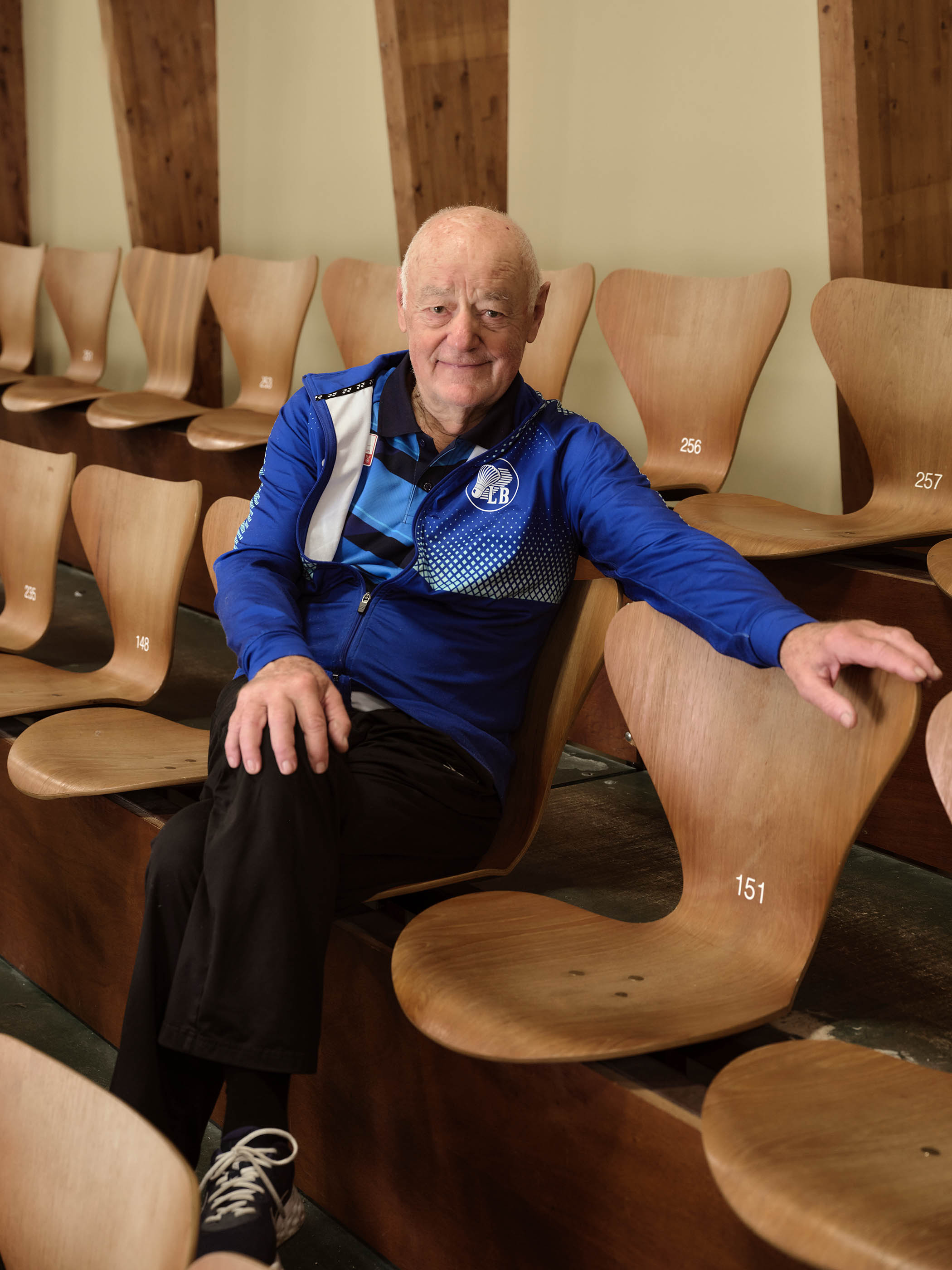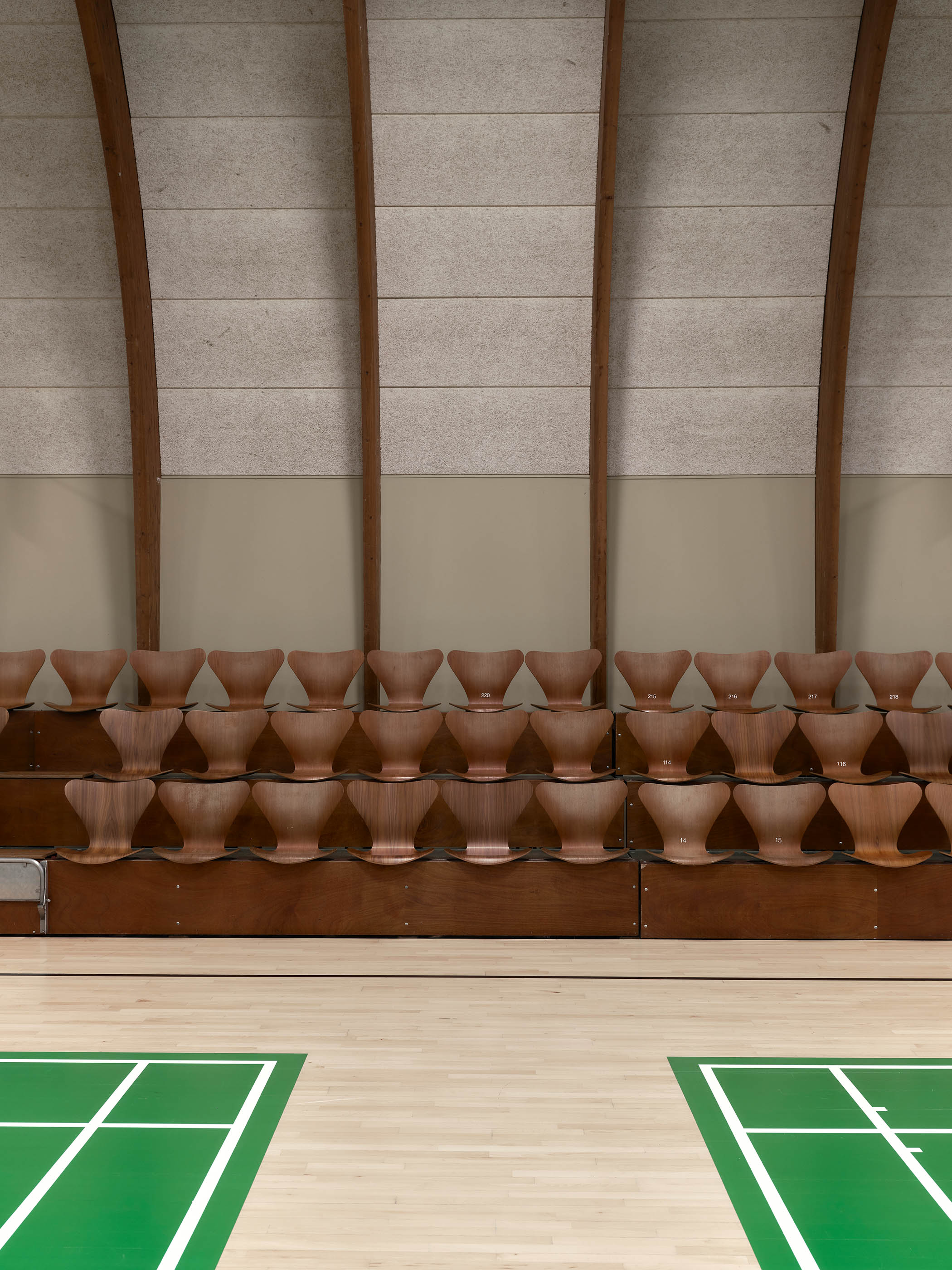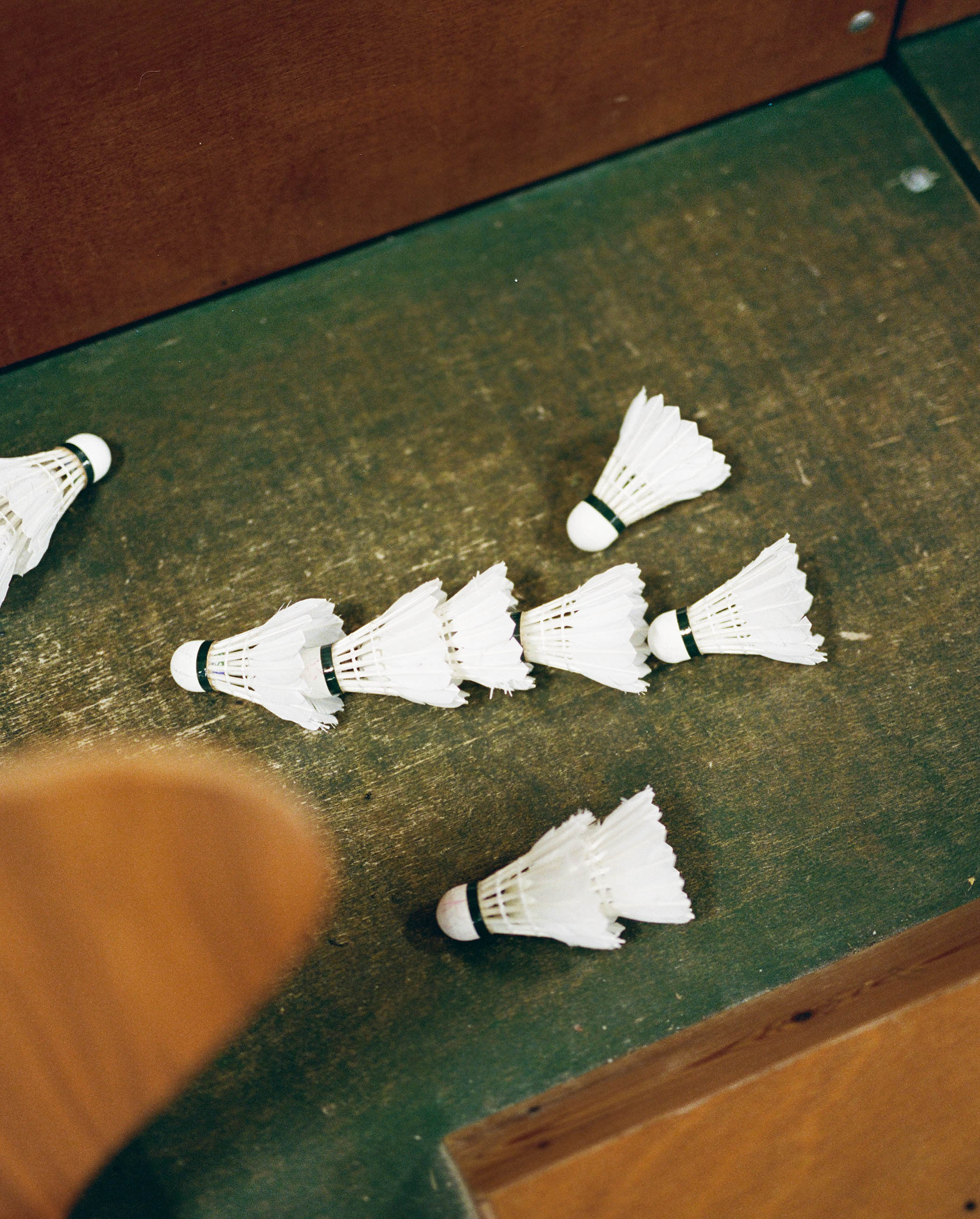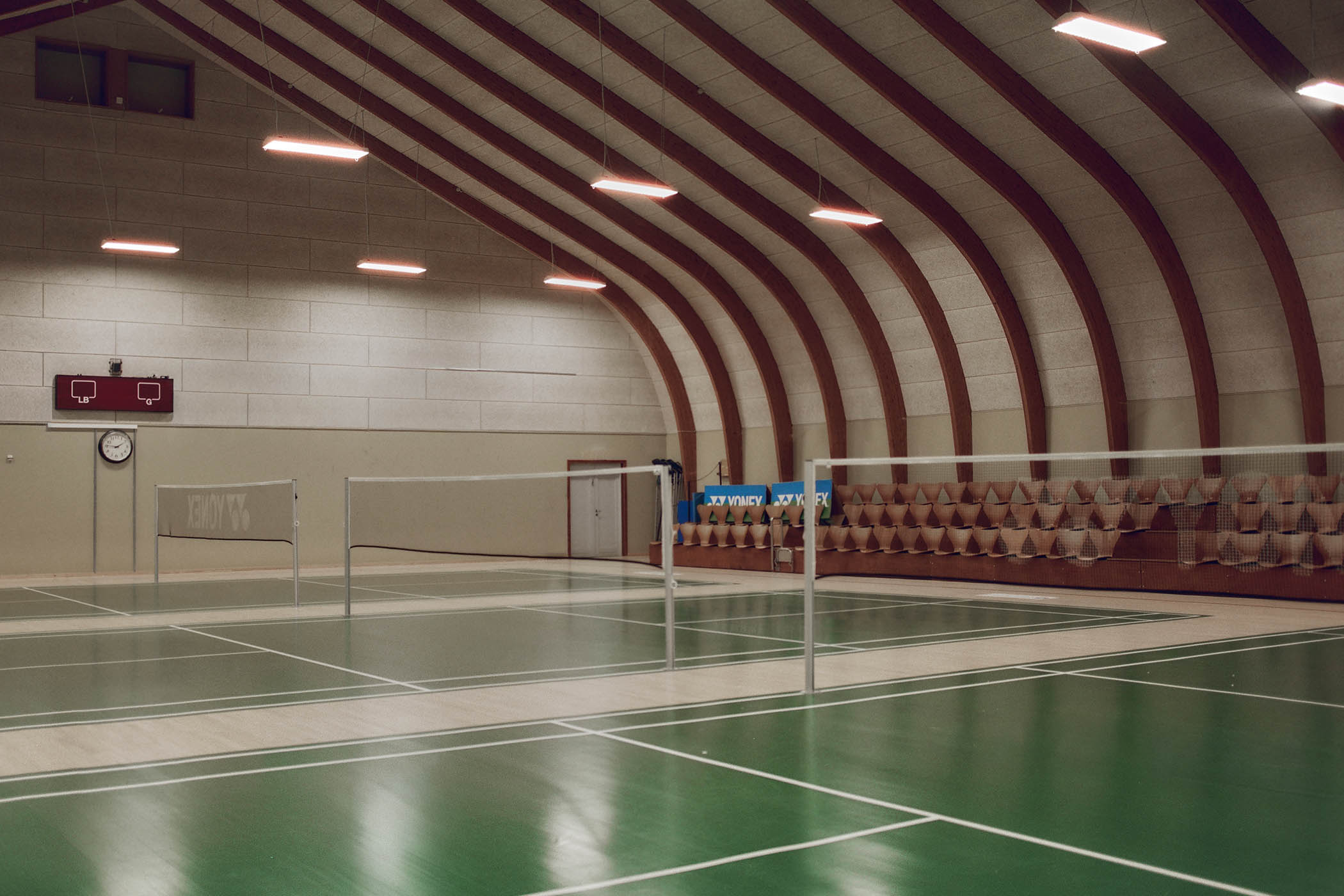Entering Lillerød Badminton Hall, 30 minutes north of Copenhagen, I’m briefly nostalgic for the squeaky-floored sports halls of my youth. Where is the distorted sound, the colourful confusion of spaghetti-like lines on the floor? What about the lino and the painted breeze-block walls?
The shape of this building is that of an upturned boat, with gently sloping walls and a vaulted roof rising to a peak. Wooden ribs hold the shape, and textured, off-white walls trace the curves. And there is a sprung wooden floor neatly painted with six green badminton courts.
“Teams love to play here,” says Jens Buck-Jensen, senior committee chair of the club. “It’s the whole environment – the lighting, the building, the construction of it.” He points up to the ceiling. “You can lift up pretty high here on a return – and serve high, too.”
He walks me over to a wall of photos. “Many of Denmark’s great players have played in this hall,” he says, pointing to a picture of Poul-Erik Høyer Larsen, one of Denmark’s badminton legends, who won gold in the men’s singles at the 1996 Atlanta Olympics.

‘Many of the country’s great players have played in this hall’: club chair Jens Buck-Jensen sits on the Fritz Hansen Series 7
Denmark holds a surprisingly strong position in world badminton: the last two men’s singles gold medals in the Olympics were won by Viktor Axelsen, while the current men’s world No 2 is a Dane, Anders Antonsen. Not bad for a country with a population of just over six million.
It’s fair to say that Denmark punches above its weight in the design world, too. In the hall, spectators sit (unwittingly, perhaps) on a design icon. Along the right-hand wall there are 232 Fritz Hansen Series 7 chairs, laid out in three tiers. (The distinctive triangular-backed design will be familiar to those aware of that very famous Christine Keeler/Profumo affair photograph.) In Lillerød, however, on an average match day, the walnut-finished chairs are used by badminton fans, with 12 black versions reserved for the line judges.
To understand why anyone would design a badminton hall like this, you have only to look down the street. Fritz Hansen’s headquarters are in the same town; until 2012 its factory was, too. “It made sense at the time because the factory was right there,” says Els Van Hoorebeeck, Fritz Hansen’s creative director. “We are part of the community here in Lillerød. A lot of employees live here and work at the company. Giving back is important.”

Unbeatable design: the walnut-finished chairs are for spectators, with 12 black ones for line judges
There is also something spectacularly Danish about the combination of badminton and designer furniture. The Series 7, created by the renowned designer Arne Jacobsen in 1955, features heavily in Danish city halls, civic spaces and hospitals. While it is a designer chair, anyone from any walk of life might find themselves sitting on it. Badminton, likewise, is a game that requires elite skill to master but can be played and enjoyed at all ages and levels. A sport for everyone, a chair for anyone, in a country where equality and community are prized.
“Danish design is famous for what it stands for,” says Van Hoorebeeck. “In the prosperity following the second world war, the rise of Danish modern design was all about optimism and human-centricity. It also reflects our lifestyle – our public places are designed with human interaction in mind.” While the design dates from the 1950s, the ideas behind it are resonant today. “In our cold, digital world we crave analogue, warm, human feelings,” says Van Hoorebeeck. “A wooden chair feels very different to sit on from a plastic one.”
Many seats here are numbered; some are attached by gold-coloured bolts, and others are plain. They form a visual story about the evolution of the chair: numbered chairs are the originals, dating back to 1973, when the project began, with other iterations coming over time. It’s also a story about the longevity of design: once a year, the Fritz Hansen repair team helps to replace and restore any chairs that need it; many are more than 50 years old and still going strong.

‘It’s something spectacularly Danish, this combination of badminton and designer furniture’
Circular design is in vogue: Van Hoorebeeck notes that in the Netherlands, the government now requires public projects to purchase 30% reused furniture. As a company that works with interior design in civic buildings, it made sense for Fritz Hansen to move in that direction. Its ReNEW programme offers businesses the chance to refurbish and repair their designs, extending their life and making sure they can serve generations to come. “Sustainability is about longevity,” says Van Hoorebeeck. “If you don’t have to produce something new, that’s the best thing you can do for the planet.”
Next week, Lillerød’s top team faces off against its closest rivals in an attempt to gain promotion to the Danish Badminton League, the country’s highest-level team tournament. Buck-Jensen is confident they will do well. “We’re unbeatable on our home ground,” he says. Testament, perhaps, to the gamechanging impact of design.
